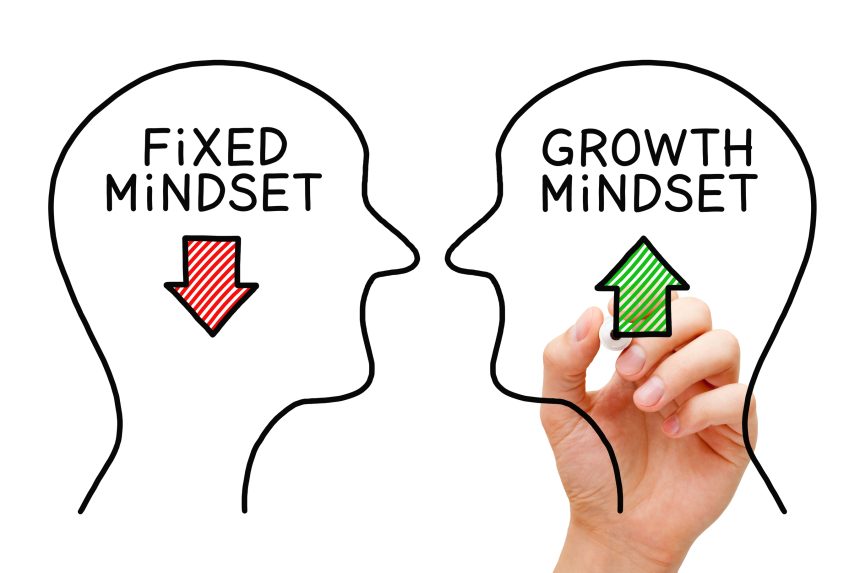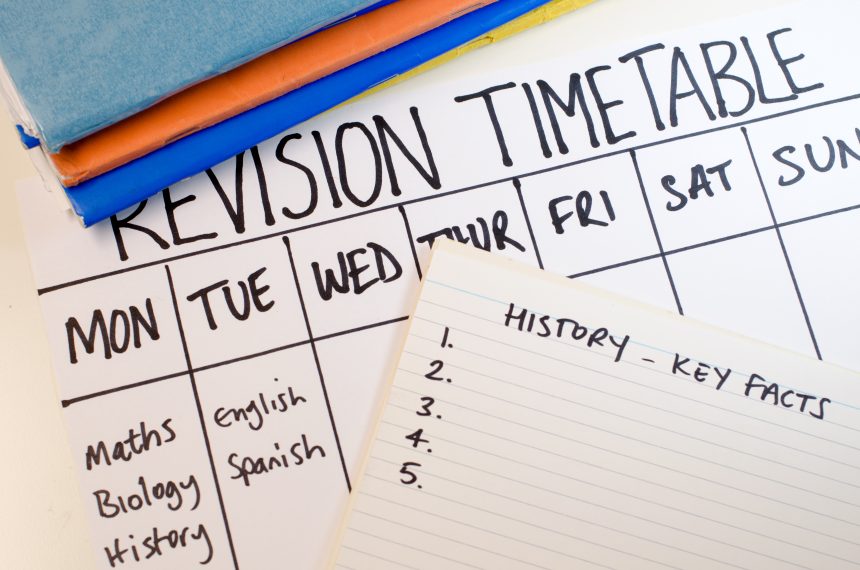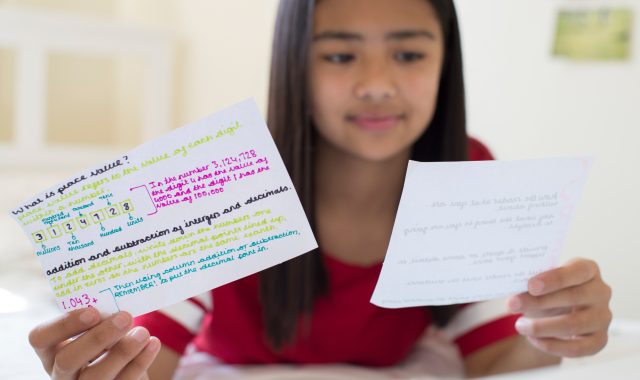Contents:
Everyone knows a handful of people who breezed through school, putting in little effort and leaving with a string of As or A*s. However, these students are few and far between.
While genes do, to some extent, determine grades, a large part of academic success can be credited to hard work and good study habits. Achieving better grades doesn’t necessarily involve putting in longer hours; often it can be achieved by studying smarter, not harder.
This article will discuss key habits of high-achieving students and explore the ways in which you can help your child adopt them. Developing the right study and organisational skills will not only boost their grades in the short-term, but will set them up for future success.
1. High achievers have growth mindsets
One key characteristic of high-achieving students is that they have growth mindsets.
Growth and fixed mindsets have been studied by the psychologist Dr. Carol Dweck. According to Dr. Dweck, individuals with fixed mindsets believe that intelligence is fixed or static, whilst individuals with growth mindsets believe that intelligence can be developed.
On the basis of those beliefs, these individuals demonstrate different behaviours:
- Those with fixed mindsets avoid challenges, since challenges could potentially reveal weaknesses or incompetence. In contrast, those with growth mindsets embrace challenges, viewing them as opportunities to learn and grow.
- Individuals with fixed mindsets give up more easily, see effort as less fruitful, and are less likely to take on board constructive criticism than their growth-oriented peers.
It makes sense that those who embrace challenges as opportunities to learn and value effort as integral to success will outperform those who shrink from challenges and dismiss effort as irrelevant.

Indeed, the results of two large-scale studies bear this out. From research carried out in Chile, Dweck and colleagues concluded that mindset predicts high-school grades across all socioeconomic levels. Likewise, in the US, academic mindsets were shown to be highly correlated with academic performance.
If you recognise features associated with a ‘fixed mindset’ in your child, don’t despair. Mindsets are not fixed and growth mindsets can easily be fostered in individuals who display ‘fixed mindset’ traits. As a parent you can facilitate this in a number of ways.
Praise effort, encourage inventiveness, and talk about neural plasticity
Encourage your child to see their abilities as constantly expanding, rather than fixed.
If your child says they can’t do something, remind them that this is only temporary; they can’t do it − yet. You can explain to them that the brain is plastic rather than static, and that when we do something over and over, new neural pathways are built and strengthened. This means they will start finding the task easier the more they do it.
Simply put, the brain is like a set of muscles, which weaken or strengthen with use or disuse, and the things that seem difficult today will be a little easier tomorrow.
In that vein, it’s important you refrain from talking about fixed abilities or capacities. If your child is having a hard time on their maths homework, rather than consoling them along the lines of ‘Not everybody is good at maths − just do your best’, try instead ‘When you learn to solve a new maths problem, your maths brain grows!’
While effort should be emphasised over ability, praising effort is not enough. Someone with a growth mindset will often try a variety of different strategies to overcome a challenge. Often trying a number of approaches is vital to learning and improving. When your child is stuck, letting them know you appreciate the effort they are putting into a task will surely make them feel better. However, it’s also important to help them explore what approaches they have tried so far and what they can try next.

Model a growth mindset
Verbally encouraging your child to adopt a growth mindset is important, but research by Dweck shows your actions need to align with your words.
Modelling a growth mindset can be really powerful − as parents know well, children learn by observing. One major way to model a growth mindset is to regularly try new things − practise new skills and acquire new hobbies − and persevere at them. Your child will be able to see that most skills are learned rather than innate, and that effort and persistence are key to success.
It’s also important to pay attention to how you talk about yourself. How often do you say you’re terrible at sports or that you can’t sing?
You don’t need to pretend that you’re perfect and that you find everything easy. Instead, you can share your struggles with your child − talk about your mistakes and what you’ve learned from them. This will encourage your child to view failure as a springboard for growth.
Finally, don’t give up (in front of the kids). If the flatpack furniture is refusing to assemble itself, don’t despair − take a break and try a new strategy. If they see you working through a problem and showing ingenuity and tenacity, they will mimic this behaviour in other areas of their lives.
Long-term change
Perhaps you feel you have a fixed mindset and are interested in how you can change it.
Often, people find research on the growth mindset attractive, but have trouble accepting it on a deeper level, having been taught from childhood that their capacities are set in stone. If this is you, you might want to examine your core beliefs about the fixity or fluidity of intelligence. Dweck recommends you ask yourself the following questions:
- Do you feel overly anxious [when you face challenges]?
- Do you feel incompetent or defeated?
- [When you can’t do something] do you look for an excuse?
- Watch to see whether criticism brings out your fixed mindset.
- Do you become defensive, angry, or crushed instead of interested in learning from the feedback?
- Watch what happens when you see [someone do] better than you at something you value. Do you feel envious and threatened, or do you feel eager to learn?
Dweck encourages anyone who’s answered any of the questions in the affirmative to “Accept those thoughts and feelings and work with and through them. And keep working with and through them”. Changing deep-seated beliefs is a long process − but completely achievable.

2. High achievers are active learners
Another key characteristic of high-achieving students is that they practise active learning.
Active learning is an umbrella term for a range of methods that engage students as active participants in the learning process.
In the classroom, these methods may include brainstorming, group discussions, or completing minute papers. While at home, active learning strategies might include creating mind maps, teaching someone else, preparing counter arguments, summarising key information whilst reading a textbook, or self-testing via flashcards or past paper questions.
Active learning contrasts with passive learning, in which students passively assimilate information by methods such as reading or listening to a lecture.
Active learning has been well documented as promoting higher/increasing motivation levels, learning at higher cognitive levels, and enabling the retention of material in the longer-term.
The benefits vary according to the method employed − for example, it is likely that using flashcards will result in better retention of information, but won’t necessarily result in a ‘deeper’ understanding of the material tested.
Learning by teaching others
One active learning strategy that stands out as particularly effective is learning by teaching others.
Those who consolidate their learning by teaching others show better understanding of the material taught and also retain it for longer. They also demonstrate huge improvements in confidence, creativity, and independence.
The magnitude of the effect on understanding and retention, and its replication across numerous studies, has led to it being dubbed The Protege Effect.
Why does teaching others work so well?
Researchers have argued that teaching by learning works because when you learn something with the intention of teaching it, you process the information more deeply and engage in metacognitive reflection, asking yourself questions like ‘How would I explain this concept to someone else?’.
Anticipating questions, you are also more likely to fill in gaps in your knowledge.
Finally, knowing that you will have to teach someone else forces you to grasp the core idea of the material being learned. As a result, you engage in deep processing or ‘elaboration rehearsal’, which allows the information to bypass the short-term memory and enter the long-term.

Learning by teaching others is a great method, but it’s not feasible for your child to teach everything they learn to someone else.
Your child may be able to teach you from time to time. They could also set up a Youtube channel dedicated to teaching others or organise virtual study sessions with their friends, at the end of which they could teach each other. However, this can only account for a small chunk of their syllabuses.
They should complement teaching others with other active learning strategies such as making mind maps, which are great for enabling creative thinking, and making lists. There are many free tools available online that your child can use; alternatively, here is a simple guide to creating them by hand.
Flashcards are also great for memorising content, and likewise there are a plethora of tools and apps available for this. The free app Anki is ideal − its advanced algorithm prioritises flashcards users don’t know so well, ensuring learning is efficient.
The greater the variety of active learning techniques your child engages with, the better. Using a variety of techniques to learn something enables more regions of the brain to store data about it, providing more opportunities to retrieve the content when it is tested. This leads to higher recall. Active learning is not only more effective; it is also more enjoyable.
3. High achievers don’t cram
While cramming the night before a test might result in a better mark than doing nothing at all, high achievers don’t cram. Instead, they space their revision out − a concept known as distributed practice. Distributed practice results in vastly improved long-term information retention rates and its effects have been replicated across hundreds of studies.
Why is distributed practice the best form of revision?
The underlying mechanisms that drive the beneficial effects of distributed practice are not yet clear.
One theory, the study-phase retrieval theory, posits that each time you successfully retrieve information from your memory, the memory becomes more resistant to forgetting.
Distributed practice involves multiple instances of information recall, which enables information to move to your long-term memory store. In contrast, cramming, or massed practice, simply encodes information in your short-term memory, where it quickly degrades.
Distributed practice works best when done at regular intervals between the initial learning event and the final test. Thus, content learnt in February and tested in June should not be revisited just before your child’s exams, but in the preceding months as well.
The one major advantage of distributed practice is that it does not necessarily involve putting in more hours. However, it does require more planning.

4. High achievers have timetables − and stick to them
Organisation is crucial to long-term academic success, and a well-thought-out timetable is key to good organisation.
Timetables allow students to prioritise effectively, ensuring little time is wasted on revising unnecessary material.
Good timetables are planned with both the long-term and the short-term in mind; major assessments are taken into account and the work necessary to prepare for them is broken down into manageable chunks.
Tools to help your child create a timetable
If your child has yet to build a timetable, they may want to start off by deciding how they want to create it.
-
- If your child prefers doing it by hand, there are numerous free, printable templates available online: Example 1; Example 2; and Example 3.
- Excel itself offers a downloadable template
- Get Revising has a free timetable builder tool
If your child prefers to access their timetable from a device, MyStudyLife is a free timetable builder that works on both desktop and mobile.
How to create a timetable
First, your child will need to schedule in their classes.
Then, they’ll need to allot time for homework, assignments, and revision. Exactly how they do this will depend on the level they are at as well as the time of year. For example, it may be better to ‘block study’ in the run up to exams. In term time, however, interleaving − or switching between subjects or topics − works best, allowing connections between subjects or synoptic links within subjects to form.
Not only should your child’s timetable change across the course of the year, but it may change week by week. Your child should constantly assess which subjects need to take priority that week and adjust their timetable accordingly. For example, if the Geography coursework deadline is on the horizon, perhaps they can put Music on the backburner.

5. High achievers exercise
High achieving students don’t just sit in front of a textbook or computer screen all day; they are also physically active.
The positive impact of physical activity on academic performance has been well documented by researchers. Cardiorespiratory exercise − such as running, swimming, cycling, dancing, and boxing − is beneficial to brain structure, function, and cognition.
Moreover, these forms of exercise are associated with increased attention capacities, and improved verbal and non-verbal abilities, abstract reasoning, and spatial and numerical ability.
The Consensus of Copenhagen
There is such a consensus on the relationship between exercise and academic performance that a panel of experts have released a statement entitled the ‘Consensus of Copenhagen’.
This Consensus states that physical activity in children and adolescents improves cognitive functioning, as well as having a whole range of other benefits, such as improvements in self-esteem, relationships with parents and peers, and motivation.
It’s likely your child already does some form of sport or exercise. If they don’t, there are such benefits to exercise that it would be a good idea to encourage them to start. You could do this together and see it as a bonding exercise, not just one which will help them physically and academically.
If you think you’ll struggle to convince your child to get moving, the web has a plethora of articles to help, while YouTube has both family workouts and workouts directly targeted at teens.
Exercise at any time of day is great, but pre-school workouts have been particularly documented as improving alertness and mood.
Workouts don’t have to be long − even 10 minutes will boost cognitive performance due to the enhanced blood flow to the brain.
It’s unlikely you’ll manage to get your child to do an early morning HIIT workout. However, you may want to encourage them to walk briskly to school or the bus stop to get their heart pumping. Any exercise is great, but sustained, regular exercise is best.
Exercising regularly over a sustained period of time will effect changes in brain structure, resulting in healthier, more efficient brains in the long-term.

6. High achievers have a good home workspace
Successful students don’t just study hard, they also study well. Key to successful learning is creating an environment that is conducive to learning − in other words, an environment that is comfortable and free of distractions. If your child is studying at home, you’ll want to make sure the study space they are using is right for them.
Good lighting is key − their chosen spot needs to be bright enough that they stay alert, but not so bright that it causes headaches.
A spot with a good source of natural light is best; research has found that people working in daylight rather than under artificial lighting stay alert for longer and perform better on cognitive tasks. Daylight also boosts mood, so if your child is studying in natural light, they might find it easier to put in the hours in front of a textbook.
Noise level is as critical to concentration as lighting. A noisy environment will detract from a child’s ability to concentrate. However, this can be combated with ear defenders. Listening to music or binaural beats can also be an effective way of blocking out noise − and depending on the genre or the frequency, may bring its own benefits.
Finally, it’s important to eliminate any potential technological distractions. If your child is using the internet to study, it’s good practice for them to close any open tabs or windows before they begin, as they limit the ability to focus.
You might also want to consider installing extensions on their computer that allow them, or you, to temporarily block sites that you identify as distractions. One such (free) example is Leechblock.
Perhaps your child’s biggest potential distractor is their mobile phone. Following research conducted by the University of Chicago that found that the mere sight of one’s (turned-off) phone reduces cognitive capacity, you’ll want to insist they keep it away from their study space, and therefore out of mind.
Changing habits is notoriously difficult − it’s hard to change your own, let alone someone else’s.
Something important to note is that your child doesn’t have to do all six things to be a successful student. In fact, just implementing one or two may have a big impact on their academic performance.
If you want to instil some of these habits in your child, it’s important that you don’t start off by pointing out how far from the ‘ideal’ student they are. Comparisons will only result in wounded feelings, defensiveness, and resistance. Instead, think of constructive ways of encouraging your child to implement one habit. Start off small; the easiest on this list may be creating a study area. Whenever you introduce a new idea, maintain a positive tone and even offer to help them with it. Getting involved in a fun and constructive way will make your child feel supported.
It may take a while for your child to take up some habits − developing a growth mindset may involve gradual change, while doing regular exercise may take a while to build up. However, this doesn’t mean they’re not worth encouraging − just don’t get stressed if they’re not adopted immediately.
Remember: change doesn’t happen overnight. Even if your child initially embraces some of these suggestions, you may find a few weeks down the line that old habits start creeping back in. Gently nudging your child in the right direction and seeing this as a long-term goal will help you stay positive.
You may not realise how much change has taken place until you look back and realise that [whatever they’re doing now] they wouldn’t have done that a month ago.
Even if your child isn’t open to changing now, discussing positive habits now means they’ll know what to do in future if they feel like their academic routine needs a little revamping.







Comments